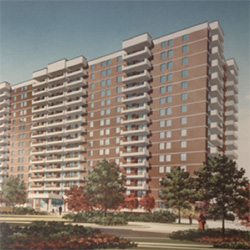After reviewing benefits and legal implications of smoke-free buildings, you will want to find out what residents think about a no-smoking policy. This will help develop a plan for your building. You may want to consider:
- Where is smoking currently taking place in/around the building?
- How often are residents exposed to second-hand smoke?
- How many residents support a no-smoking policy?
- What type of policy do residents prefer (designated smoking area, in units only, etc.)?
View an example of a survey you could use for your building.
You could also use survey results from other sources to inform your decision. Several population surveys have been completed in Ontario in addition to those for private buildings. Themes from these surveys include:
- Approximately one-third of multi-unit residents regularly experience unwanted second-hand smoke in their unit
- Very few people formally complain about second-hand smoke in their unit because most think that nothing can be done about it
- A majority of people indicate they would choose a smoke-free building if the choice existed.
In 2010 the Ontario Smoke-Free Housing Coalition commissioned Ipsos Reid to conduct a survey of approximately 1,500 Ontario adults 18+ about exposure to second-hand smoke in their multi-unit dwellings. Respondents included renters, condo owners and co-op members who were currently living in a multi-unit dwelling or had done so in the past two years. Highlights of the survey include:
- About a third (32%) of respondents indicated they were exposed to second-hand smoke on a regular basis (a few times a week or more, once a week or once every couple of weeks)
- Over half (53%) reported that the smoke came in from outside, through an open window
- About a third (35%) have approached landlords / management / government in an effort to address the problem
- Asked to choose between two identical buildings, 80% would select the building where smoking was prohibited






